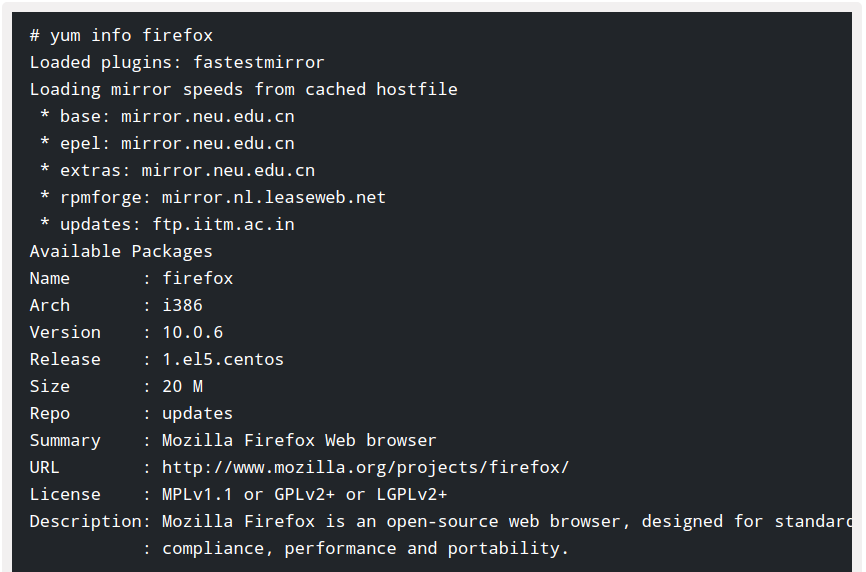
I think the reason for this is that yumdb is including default and mandatory packages from when you install a group.


Some people have written in to say the command shows packages that they never explicitly installed, things like ModemManager and firware packages. Yumdb search reason dep |egrep "agg|boost-iostreams|boost-serialization|gtkglext-libs|pangox-compat"

List packages which were installed as deps: The installed packages output can be managed and viewed page by page using the more or less commands.If you’re after a way to list all the packages you have explicitly installed (rather than packages that have been pulled in as a dependency) then you can do that with yumdb (thanks to Panu on #yum for the tip) which is powered by a new database added in 2009. The output of the installed packages takes a lot of pages to list. yum list installed "*ssh*"īy default alot of packages are installed. In the following example, we filter the packages whose names contain “ssh” and also installed currently. The installed package list provides following information about the installed packages.Īlso installed package names can be filtered by using the “yum list installed” command. “yum list installed can be used to list all installed packages in CentOS, RHEL, Fedora. The yum command is the most popular way to manage packages in RPM based distributions. If we want to list installed packages in CentOS, RHEL or Fedora we can use yum or dnf commands. Alternatively, the new command dnf is also adopted for these Linux distributions for package management.

RPM-based Linux distributions like CentOS, RHEL, Fedora use the yum package manager in order to update, list, install and remove packages.


 0 kommentar(er)
0 kommentar(er)
